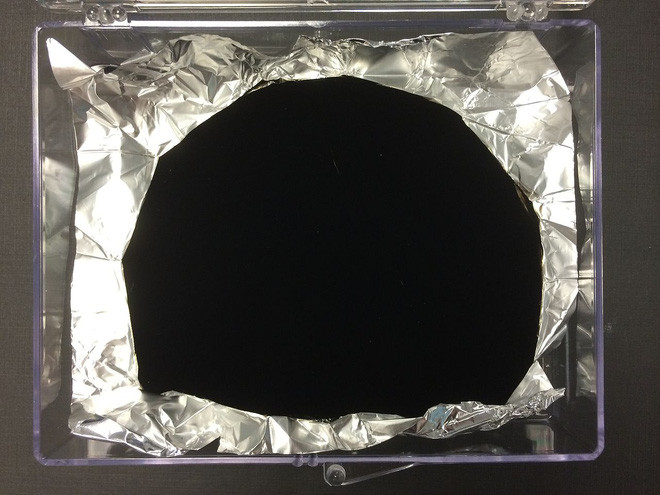Black force - a new force in the universe, becomes even more strange
This discovery may affect how we simulate the formation of stars and planets, and even help us discover a theoretical form of radiation that explains the black hole's death (flight black hole).
A new study has expanded the understanding of the discovery of black forces , suggesting that the effect of radiation on particles around large objects can be magnified by the space surrounding them.
This discovery may affect how we simulate the formation of stars and planets, and even help us discover a theoretical form of radiation that explains the black hole's death (flight black hole).
In 2013, physicists said radiation emitted from so-called "black objects" could not only push small particles away, but also pull them closer. Furthermore, for objects with enough heat and small masses, repulsive forces can be stronger than their gravitational forces.
If you have never encountered this term, the 'black object' (absolute black or short object is black) is the object that fully absorbs visible light, they do not reflect or scatter back light. . Technically, black objects theoretically describe objects that are completely unresponsive to any light. Black objects emit radiation and make surrounding particles vibrate, which helps researchers describe the thermal properties of the object.
 An artificial black object.
An artificial black object.
Four years ago, a team of Australian researchers found that the radiation emitted from a black object had a very strange effect on nearby atoms.
To understand this effect, we need to know that atoms can move and change direction when the photons they absorb cause a momentum shift of the atom. In the right conditions, large objects like a cell can be pushed around by a beam of light - a phenomenon commonly used in a form of technology called optical tweezers .
Physicists have long known that electromagnetic radiation can alter the properties of nearby atoms through the Stark effect, which changes the position of electrons in atoms and places it in the state. lower energy state. This happens to make atoms tend to move forward, to brighter parts in a light beam .
Australian physicists have applied both of these insights, showing how not only can heat radiation push away particles, but also that they can pull particles toward objects (thanks to the Stark effect ).
' The interaction between two forces - a gravitational force and a repulsive force due to radiation pressure - is often considered in quantum optics laboratories, but we have missed one thing, this phenomenon is also present with heat source light ' , lead researcher Matthias Sonnleitner from Innsbruck University.
Although this force is very weak, they still show that the drag of the radiation can actually be greater than the gravity produced by small, hot masses, through particles smaller than dust.
' Particles less than 1 micron (1 micron equal to 1 / 1,000,000m) play a very important role in forming planets and stars or celestial bodies , ' Sonnleitner said. 'Obviously, there are some questions in how they interact with hydrogen gas around or together. Currently, we are studying how this extra gravitational force affects the activity of atoms and dust. '

Not long after that, another group of physicists approached the problems that Sonnleitner and his colleagues left behind. They are studying the effect of both the black body shape and its effects on the space-time curvature around this attraction and repulsion.
In particular, they calculated the curvature of the space around a spherical black object and a cylindrical black object, and they also measured how the effects of different black matter radiation forces affected.
For spherical black objects, scientists have measured the curvature and the spatial structure surrounding it, along with an exaggerated effect on gravity due to the effects of both gravity and angle. radiation acts on particles.
As for the case of a cylindrical black object, this does not happen, because it has the plane and surrounding space, where the black effect is not exaggerated.
Although this effect will be undetectable in the lab or even solar-sized objects, for giant black objects like neutron stars, this effect can be created. be significantly different.
' We think that the enhancement of black force due to super-dense sources can affect detectable phenomena related to them, such as the dispersal of super-energy particles and the formation of disks. small compensation around the black hole ', research leader Celio Muniz from Ceará State University, Brazil.
- What if you fell into a black hole in the universe?
- Surviving and even being
- Super black holes bombard the Earth with powerful cosmic rays
- Discover the mystery of the most exotic black holes in the universe
- The universe can be produced from black holes
- Black energy really exists
- Scientists think they have found the fifth interactive force of the universe
- Cosmic black holes can revive 'zombie' stars
- Why doesn't the black hole swallow the whole universe? This may be the answer!
- The 10 strangest things of the universe
- Germany successfully created the
- The universe creates a black hole in front of a galaxy
 Van Allen's belt and evidence that the Apollo 11 mission to the Moon was myth
Van Allen's belt and evidence that the Apollo 11 mission to the Moon was myth The levels of civilization in the universe (Kardashev scale)
The levels of civilization in the universe (Kardashev scale) Today Mars, the sun and the Earth are aligned
Today Mars, the sun and the Earth are aligned The Amazon owner announced a secret plan to build a space base for thousands of people
The Amazon owner announced a secret plan to build a space base for thousands of people